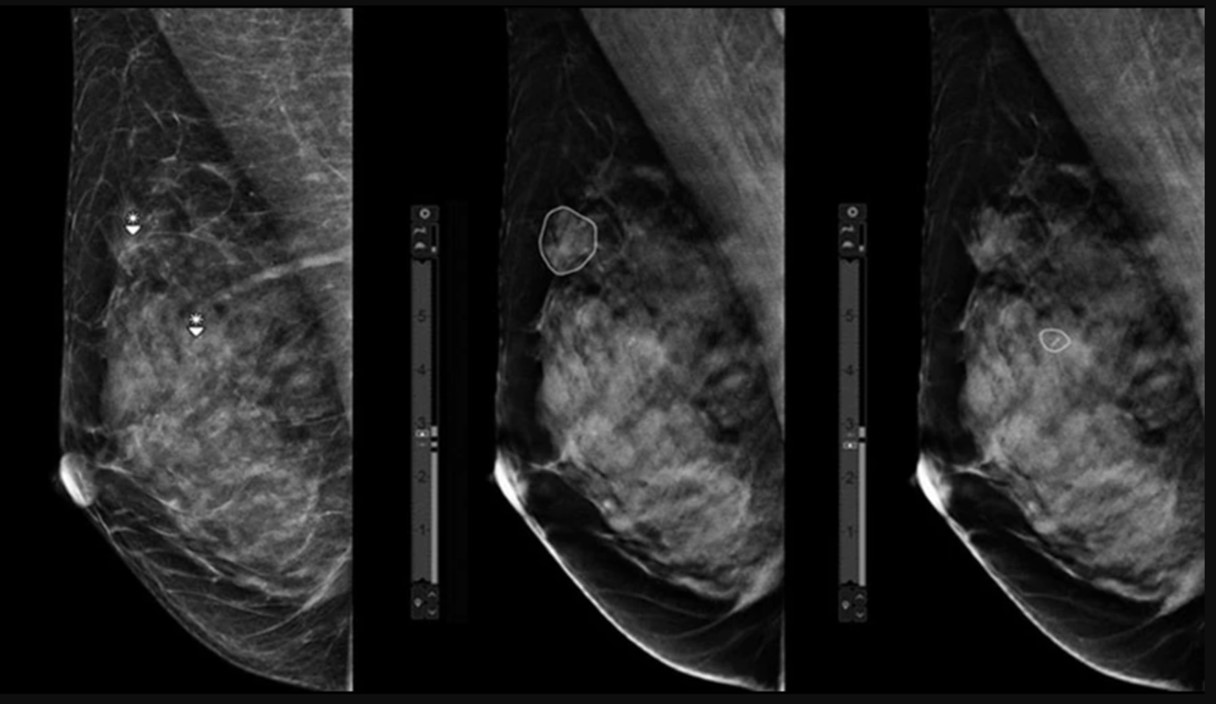The test of artificial intelligence (AI) technology for breast radiologists is if it will make their workflow more efficient and benefit patients. In the following interview, Mario Lois, General Manager of Women’s Health AI and Applied Research at GE HealthCare, says these are achievable goals. However, he continues, it’s vital to have a good plan upfront that seamlessly meets user expectations and AI is only as good as the integration of algorithms, data sets, and hardware needed to serve radiologists, along with their patients.
What are breast radiologists' expectations of AI in their workspace?
Lois: First, radiologists want to make sure that AI imaging applications are serving them and making their life easier, while increasing diagnostic confidence. AI has been in a heightened cycle, with some talk that it would somehow diminish the role of the radiologist. Such sentiment is misplaced. The goal of AI should be to help alleviate time constraints and shift specialists into higher-value tasks. In imaging, that means helping radiologists spend more time with complex cases, referring physicians, and patients. While numerous studies have indicated that AI applications could take over repetitious and mundane work for radiologists, it can’t replace medical judgment.
One quote I heard from a breast radiologist is, “AI is like giving me a great golf caddy, a whisper in my ear about wind conditions, or a recommendation on golf clubs.” In other words, AI should offer friendly and useful advice to a radiologist rather than dictate how they do their job. Another breast radiologist expressed it differently, “I would like artificial intelligence to help humanize radiology, giving me more time with patients and to collaborate more closely with other medical colleagues.”
What are some considerations in effectively deploying breast imaging AI?
Lois: To ensure a value-added user experience, you need to create seamlessly integrated solutions. This requires leveraging the strengths, capabilities, and infrastructure of a healthcare partner such as GE HealthCare’s Edison™ platform. The platform needs to be adaptable to a very specific and highly demanding breast imaging workflow if AI is going to be truly useful for the breast radiologist.
To meet that objective, GE HealthCare is transforming its culture and strategy to become a stronger digital company, offering state-of-the-art and optimally integrated AI solutions. We want to delight users, so we need to do the hard work upfront, beginning with completely understanding the problems to solve and then developing the solutions.
For imaging devices this means integrating AI into the user experience across pre-scan, intra-scan, and post-scan scenarios.
These include:
- Concurrent reading, in which AI assists the radiologist in interpreting the images. This technology has the ability to potentially reduce the number of missed breast cancer lesions while helping speed reading time.
- Standalone AI, in which the computer reads the scan independently from the radiologist. If the radiologist and AI disagree, the case could be sent to another physician for further evaluation.
- AI-based image processing, which is applying deep-learning processing algorithms that learn to identify and remove noise or artifacts, thus improving image quality and diagnostic confidence.
- Patient (breast) positioning. AI can provide technologists real-time or retrospective alerts of suboptimal patient/breast positioning. This could reduce unnecessary patient recalls.
- Risk prediction. AI can assess breast images and other data such as family history, genomics, and patient history to predict the probability that the patient will develop breast cancer in the future.
It's not just about using big data and AI to improve workflow and clinical outcomes. Radiologists also want to improve the patient experience with faster machines and other features to reduce patient anxiety or discomfort. The patient is part of the user experience; a satisfied patient enhances the doctor’s experience, as well.
How does GE HealthCare partner with clinicians to provide breast imaging AI solutions?
Lois: The first step to successfully partnering with clinicians is to listen to them. One key message we hear is that it's not enough anymore to talk about how good our image quality is, although that's still important. We must also partner with hospitals and clinics to improve their breast imaging workflow, clinical outcomes, and operational needs. And we must do this for rural hospitals as well as large health systems.
To help get us there, we have engineers and data scientists working on our broader platform, preparing for the future. For instance, we’d like breast radiologists and breast surgeons to be able to superimpose mammography, ultrasound, or MRI clinical images on their imaging workstation. Then they could virtually view into a patients’ breast before any invasive procedure to plan the best course of care. That kind of AI goes way beyond imaging and into smarter insights.
Our ultimate goal is to support the entire team that cares for a patient in a collaborative manner.
Learn more about GE HealthCare’s breast care solutions:
- Interpreting digital breast tomosynthesis (DBT) cases - ProFound AI™ by iCAD for Senographe Pristina™
- Breast ultrsound
- Mammography
DISCLAIMER
Not all products or features are available in all geographies. Check with your local GE Healthcare representative for availability in your country.

